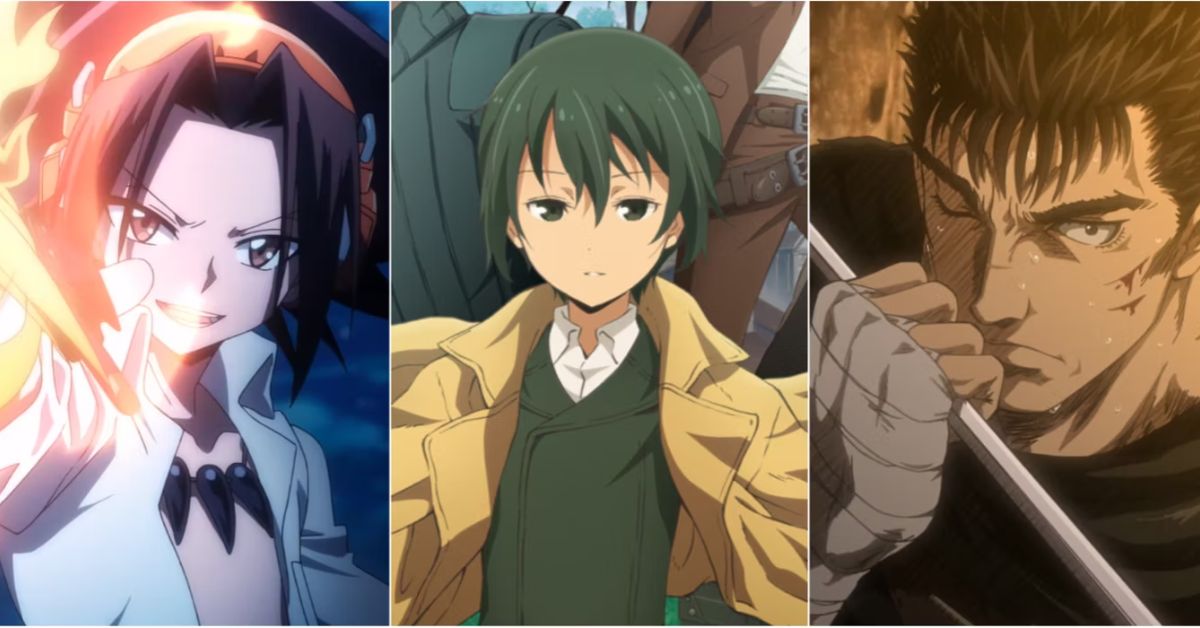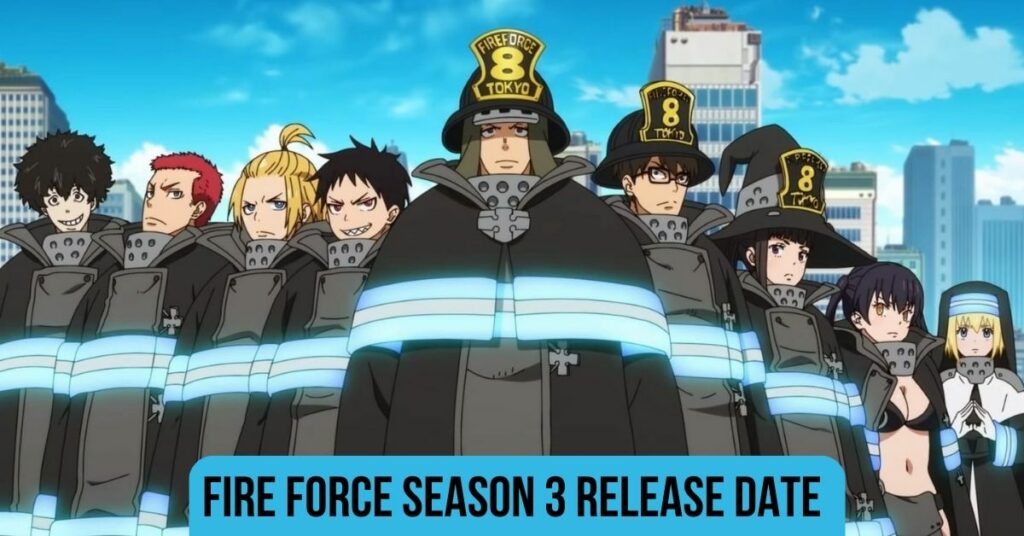It is difficult to “kill” the anime genre given their enduring popularity and influence. But some anime were so terrible or revolutionary that they ended the genre of which they were a part. Despite their prior fame, some of these genres were able to adapt to a new environment, while others seemed to vanish overnight.
At worst, a certain anime subgenre was simply destroyed. Even while these genres are still in existence today, it’s hard to take them as seriously as one may have a few years ago. In more severe instances, the genre vanished completely. Only as historical footnotes or cryptic references that few (if any) viewers would comprehend do these genres still exist today.

10. The Eminence In Shadow (Edgy Isekai & Isekai Parody)
The Eminence in Shadow appeared at first to be another “deconstructive” isekai anime that combined a childish edge with genre subversions. This was somewhat accurate, but The Eminence in Shadow also made fun of isekai anime and its self-aware deconstructions. In a nutshell, the anime damaged two distinct isekai styles.
The edgy isekai’s self-indulgences were brought to their breaking point by The Eminence in Shadow. It ran out of gags that isekai parodies could make thanks to creative writing, the deliciously sinister anti-hero Cid Kageno, and unexpectedly outstanding animation. It’s too soon to know if it killed out these isekai subgenres for good, but it makes them more difficult to accept at face value.
Also check about other articles related to Anime:
9. Tokyo Ghoul (Horror Anime)
To be fair, before it aired, Tokyo Ghoul was already in a dangerous situation. However, it was such a poor adaptation and standalone series (particularly its sequel Root A) that it damaged the reputations of its manga and the entire horror genre. Tokyo Ghoul was (and perhaps still is) the genre’s pinnacle, for better or worse.
Tokyo Ghoul, like other horror anime, used graphic violence and frightening images to make up for its poor scares. Because of its prominence, it contributed to the idea that all horror anime were cheesy gorefests. The still-popular Tokyo Ghoul will continue to serve as the standard-bearer for the horror anime subgenre until a new and superior series breaks into the mainstream.
8. Noblesse (Manhwa Anime)
To be fair, before it aired, Tokyo Ghoul was already in a dangerous situation. However, it was such a poor adaptation and standalone series (particularly its sequel Root A) that it damaged the reputations of its manga and the entire horror genre. Tokyo Ghoul was (and perhaps still is) the genre’s pinnacle, for better or worse.
Tokyo Ghoul, like other horror anime, used graphic violence and frightening images to make up for its poor scares. Because of its prominence, it contributed to the idea that all horror anime were cheesy gorefests. The still-popular Tokyo Ghoul will continue to serve as the standard-bearer for the horror anime subgenre until a new and superior series breaks into the mainstream.
Also check about other articles related to Anime:
- Haikyuu Season 5: Will The Sports Anime Return This Year?
- Is There a Vinland Saga Season 3 Release Date Yet?
7. Eromanga Sensei (The Incest Harem Anime)
Manhwa adaptations appeared to be the upcoming major anime trend in 2020. This movement was spearheaded by the anime adaptation of the hugely popular Noblesse. Unfortunately, in around the same year, the biggest manhwa anime failed to live up to expectations. Noblesse’s failure put an early end to the manhwa frenzy.
Noblesse made an effort to reduce its lengthy source material into only 13 episodes, but it failed. The anime’s uninspiring animation was another major letdown. In the views of many, Noblesse not only destroyed manhwa anime, but it also destroyed Crunchyroll original anime. Future success for manhwa anime was possible, but Noblesse derailed their progress.
6. Mobile Suit Victory Gundam (Real Robot Anime)
Portable Suit Ironically, Gundam invented then extinguished the true robot genre. Victory Gundam could be blamed for this decline. Victory was not just the first significant failure for Gundam, but the genre was also oversaturated at the time. The failure of Victory even compelled the reboot of Gundam and the series’ trademark grim tone and Universal Century.
5. The Melancholy Of Haruhi Suzumiya (School Life Anime)
The Melancholy of Haruhi Suzumiya killed both its own buzz and, arguably, the school life anime as well with the contentious Endless Eight chapter. The 2000s were dominated by anime about school life that featured a bunch of oddball high schoolers (who were almost always led by an excited lady). These anime are almost all thanks to Haruhi.
4. Sword Art Online Killed (Classic Isekai Anime)
Although Sword Art Online wasn’t the first isekai anime with a video game setting, it was unquestionably the most significant. The cartoon sparked a wave of isekai anime that was gamified and swamped the decade of 2010. Even though there was a downturn, the tendency is still strong today. However, the once-vast isekai anime genre was all but destroyed by gaming isekai.
3. Neon Genesis Evangelion (Classic Mecha Anime)
For the majority of fans, Neon Genesis Evangelion represented the pinnacle of the cheesy super robot subgenre. They frequently overlook the fact that Evangelion also served as a deconstruction of the real robot sugbenre that predominated at the time in mecha anime. Two of the most prominent forms of the mecha genre were eliminated by Evangelion due to its masterful deconstructionist techniques.
2. Puella Magi Madoka Magica (Modern Magical Girl Anime)
Pokémon Magi Madoka Magica is credited with dissecting contemporary magical girls by turning their exploits into a cosmic horror tale with somber existential undertones. Magical girl anime has evolved since Madoka’s popularity, becoming subversive at best and overly dark at worst. The original magical girl anime came to an end as a result of this.
Magical girl anime in the innocent and imaginative manner of Sailor Moon are uncommon today, with the exception of those aimed exclusively at young girls. The prevalence of destructive magical girls has made violence and meta subversion the archetype’s default characteristics. The majority of anime viewers even turned dark magical girls into a crude joke.
1. Sailor Moon (Original Magical Girl Anime)
The magical girl anime genre used to take its magic literally until Sailor Moon established the modern magical girl anime. Before, supernatural girls were either celebrities or witches. They realized foolish and notably stereotypically “girly” power dreams. But these out-of-date fashions were replaced when Sailor Moon debuted with its vision of magical girl warriors.
Sailor Moon grew the magical girl genre of anime rather literally. Instead of being young toddlers, magical females were now teenagers who dealt with more serious issues and engaged in deadly battles. The slightly overrated magical girls from Sailor Moon become the standard for the genre. Young witches and idols made a comeback, although in new genres like anime about schools or idols.
You can also follow us on our Twitter handle to be in check with all the current happenings.



